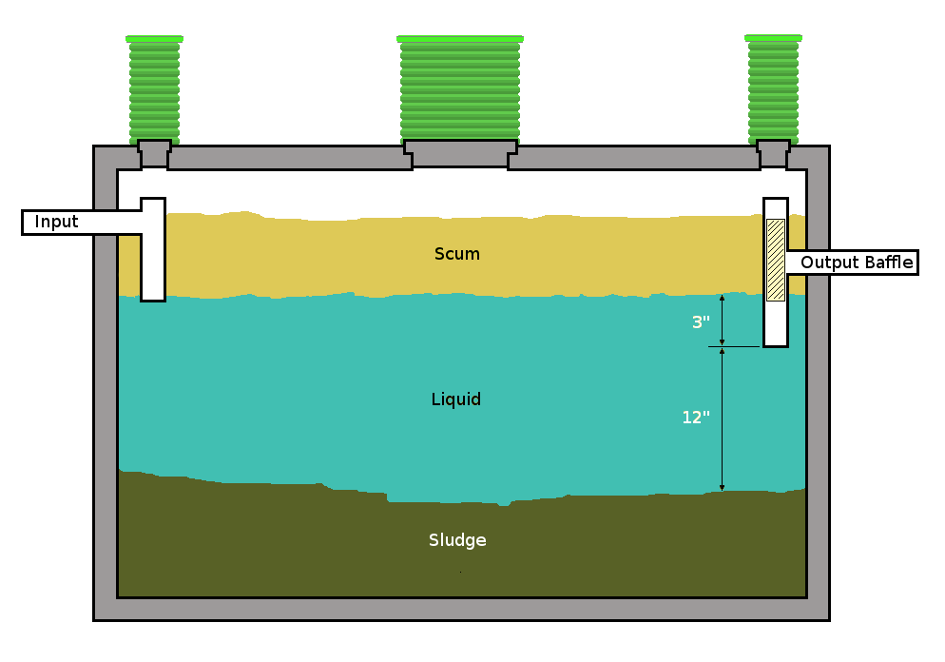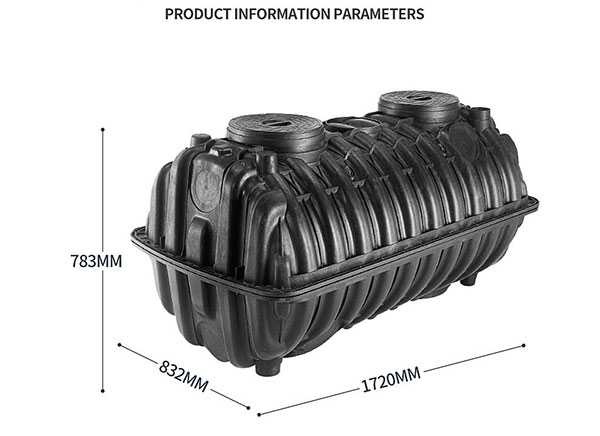Arranged Septic Tank Pumping: Extending the Life Expectancy of Your Septic Tank
Wiki Article
Translating the Language of Sewage-disposal Tank Providers: A Reference of Terms for Clear Communication and Understanding
In this article, we'll aid you decode the language of septic tank services with a helpful reference of terms. From understanding the essentials of your septic tank to dealing with sludge accumulation, we'll offer clear descriptions to ensure clear interaction and understanding.Septic Tank: Comprehending the Fundamentals

If you are not familiar with septic systems, they are below ground containers that deal with and hold wastewater from your home. These containers are an important part of your home's pipes system, in charge of safely and properly taking care of the waste generated by your daily activities. Recognizing the essentials of septic containers is crucial in order to guarantee their correct capability and prevent expensive repair work.
A septic container contains 2 primary components: the tank itself and the drainfield. The storage tank is where the wastewater streams into, and it is designed to divide solids from liquids. The solids clear up at the base of the container, creating a layer of sludge, while the liquids, understood as effluent, rise to the top. The effluent then streams right into the drainfield, where it is further dealt with and spread into the bordering dirt.
Normal upkeep of your septic system is necessary to protect against concerns such as blockages, backups, and system failings. It is suggested to have your storage tank pumped every three to 5 years, depending on its dimension and use. Additionally, it is important to be conscious of what you purge away and bathrooms, as specific chemicals and products can hurt the bacterial balance in the tank.
Drainpipe Field: The Role of Soil in Waste Disposal
To preserve the appropriate capability of your sewage-disposal tank system, it is critical to recognize the duty of the drainpipe area in garbage disposal and how the surrounding dirt plays an essential role in this process. The drainpipe field, likewise called the leach field or absorption area, is a vital element of a septic tank. Its primary function is to filter and deal with the wastewater that drains of the septic storage tank.As soon as the wastewater leaves the sewage-disposal tank, it is dispersed equally across the drainpipe field through a network of trenches or pipes. The drainpipe field includes a layer of gravel or rock, which aids to distribute the wastewater uniformly and promote effective filtering. Listed below the gravel layer, there is a layer of dirt that functions as an all-natural filter.
The dirt in the drainpipe field plays a vital duty in the treatment of wastewater. As the wastewater percolates via the soil, it undertakes a natural procedure of filtration and purification. The dirt functions as a physical and organic filter, eliminating unsafe microorganisms, infections, and various other pollutants from the wastewater.
The composition and top quality of the soil are essential for the efficient performance of the drainpipe field - septic tank pumping. The soil must have good percolation rates to permit the wastewater to relocate via it quickly. Additionally, the soil must have sufficient oxygen degrees to sustain the development of aerobic bacteria, which aid in the breakdown of raw material in the wastewater

Effluent: the Liquid Waste From Your Septic Tank
As the wastewater leaves the drainpipe area, it is referred to as effluent, and it is necessary to understand the features and monitoring of this liquid waste from your septic tank. Effluent is the term made use of to define the cured wastewater that moves out of your sewage-disposal the original source tank and right into the drain area. septic tank pumping. This fluid waste contains a blend of water, raw material, and dissolved solidsEffluent ought to be totally free and clear of any kind of undesirable odors. It could be a sign of an issue with your septic system if you notice any nasty scents or staining. Routine upkeep and pumping of your septic system can help make sure that the effluent continues to be free and tidy from impurities.
Proper monitoring of effluent is important to protect click here to read against contamination of the surrounding setting. The drainpipe area is created to filter and treat the effluent prior to it goes into the soil. It is very important to stay clear of any kind of activities that could possibly damage the drainpipe field, such as auto parking cars or growing trees with deep origin systems.
Sludge: Taking Care Of Solid Waste Build-up
When dealing with strong waste accumulation in your septic tank, proper management of sludge is crucial. Sludge refers to the thick layer of strong waste that collects at the end of your septic system gradually. Otherwise handled appropriately, sludge can trigger numerous problems, such as obstructing, backups, and also system failure.Regular maintenance is crucial to stop sludge build-up. It is suggested to have your septic container pumped every 3 to five years, depending upon the size of your household and the container's ability. useful link Pumping removes the built up sludge, permitting your septic tank to function successfully.
In addition to normal pumping, there are a few actions you can take to minimize sludge build-up. First, be mindful of what you flush down the tubes. Stay clear of getting rid of non-biodegradable things, such as paper towels, baby diapers, and hygienic products. These can add to sludge accumulation. Second, consider using septic-safe products that won't interfere with the all-natural microbial equilibrium in your system.
Pumping: Keeping the Wellness of Your Sewage-disposal Tank
Keep the health and wellness of your septic container by on a regular basis pumping it. Over time, strong waste and sludge build up in the container, which can lead to obstructions, back-ups, and also system failing.The frequency of pumping depends on numerous elements such as the size of the tank, the number of occupants in your house, and the usage of water. On average, septic containers must be pumped every three to five years.
Conclusion
So there you have it: a convenient reference of terms to assist you better recognize the language of sewage-disposal tank solutions. Whether it's discovering the essentials of sewage-disposal tanks, understanding the duty of the drainpipe field, or recognizing how to manage sludge build-up, this reference will guarantee clear interaction and a better understanding of your septic tank. Maintain these terms in mind to preserve the health and wellness and functionality of your septic tank.A septic storage tank is composed of 2 main parts: the tank itself and the drainfield.Normal upkeep of your septic container is essential to stop concerns such as blockages, back-ups, and system failures.To maintain the appropriate performance of your septic container system, it is essential to recognize the function of the drain area in waste disposal and how the bordering dirt plays a crucial function in this procedure. It is advised to have your septic storage tank pumped every three to five years, depending on the size of your home and the storage tank's capacity. Whether it's discovering about the fundamentals of septic storage tanks, understanding the function of the drain area, or understanding exactly how to deal with sludge build-up, this reference will certainly guarantee clear communication and a far better understanding of your septic system.
Report this wiki page